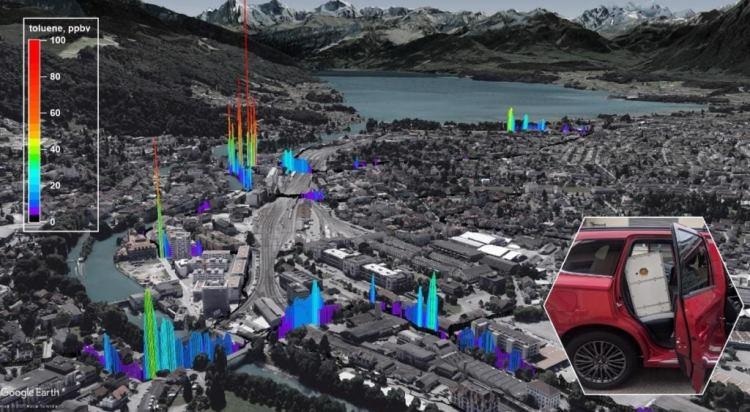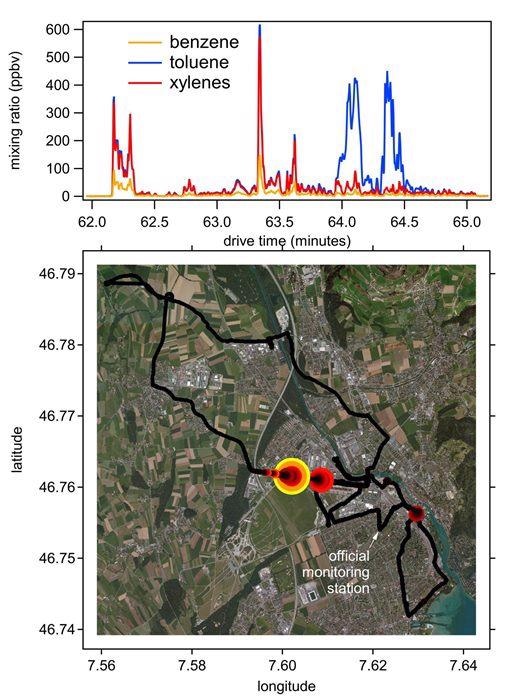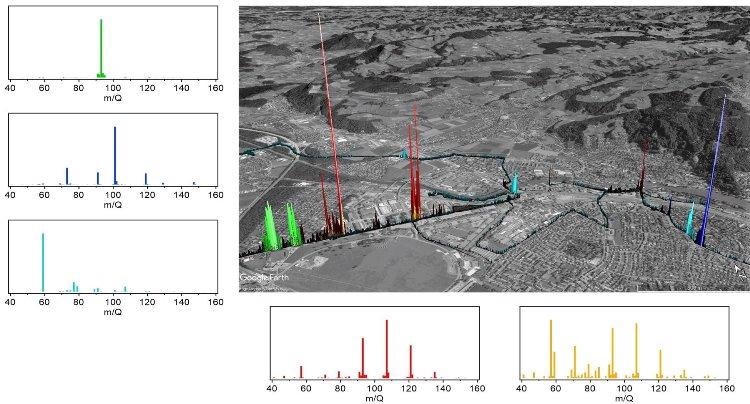When it comes to real-time mobile monitoring of VOCs, the small footprint and ruggedness of Vocus Elf PTR-TOF make it ideal.

Image Credit: TOFWERK
In order to directly map chemical emissions and dispersal in the environment, mobile laboratories equipped with fast-sensitive instrumentation are integral for researchers and regulatory authorities.
Mobile laboratories can be used for a range of different purposes: to understand ambient concentrations; to locate and “fingerprint” point sources, and to determine the real-world life cycle of VOC emissions. Crucial input is provided by this information for environmental policy, air quality modeling and public health studies.
Proton-transfer-reaction mass spectrometry (PTR-MS) has a long history of mobile lab application. It can create a direct measurement of ambient air and differentiate between individual VOCs in a complex sample matrix.
Dozens of studies have benefitted from mobile laboratories equipped with conventional quadrupole PTR-MS (PTR-qMS), and measurements made with these instruments are a foundation of modern atmospheric science.
The advantages of Vocus PTR time-of-flight mass spectrometry (multiple-Hz measurement speed, simultaneous measurement of all masses, and high sensitivity from the Vocus PTR reactor) are all offered by the Vocus Elf PTR-TOF at the size, price-point, and power requirements of PTR-qMS.
*Feature Image: Through the streets of Thun, Switzerland, an electric car was driven with a Vocus Elf PTR-TOF mounted in it. The measured ambient concentration of toluene (C7H9+) at a 4Hz measurement speed are indicated by the color and height of the markers shown along the drive path.
Using a ratchet strap, a Vocus Elf was installed, in this study, in the rear passenger seat of an electric car (Figure 1).
The car was not specially engineered or modified in any way. Through the use of a 1/4” PFA line run through the roof window and attached to a longitudinal sampling probe extending over the hood of the car, the instrument sampled external air. The drive time of 90 minutes was accomplished on full electric power to eliminate the possibility of sampling the vehicle’s own emissions, with the Vocus Elf powered by the car battery.

Figure 1. Vocus Elf PTR-TOF installed in a vehicle. A PFA sampling tube attached to a longitudinal roof sampling probe (visible in the upper right corner of the image) was connected to the instrument inlet and small external pump. Image Credit: TOFWERK
The drive path was chosen in order to include the official air quality monitoring station, a number of major arterial streets, as well as point sources such as a water treatment plant, gas stations, and the train station.
Spatial Characterization of VOC Emissions
During the drive, a number of VOC hotspots were immediately visible to the operators. Hotspots were revealed (by an overlay of the measured toluene on a map) near intersections, arterial roads, the train station and gas stations, some of which had an ambient concentration of more than 100 ppbv (Feature image).
Near a large construction site on a major roadway (Figure 2), exceptionally high concentrations of BTX were detected. Often, single stationary monitoring stations are simply not sufficient to detect such transient, large emission sources.
More than 100 unit-mass-integrated ions revealed an enhanced signal. In order to determine the chemical “fingerprints”, or VOC profile composition, of different sources, correlations between different compounds can be used.
Several distinct sources were observed, which included a toluene-rich source, an acetone-rich source, possibly two different combustion traffic-related sources, and a source containing especially m/Q 73, 91, 101, and 119.
Their distinct profile of aromatics is what characterizes combustion sources. The toluene source may be associated with the construction site. A nearby medical clinic emitting hexanal or pentanedione is possibly responsible for the VOC detected at m/Q 101.

Figure 2. High concentrations of BTX observed near a construction site along the Allmendstrasse. A time series of mixing ratios is shown in the upper panel, and the location of the hotspot is shown in the map in the bottom panel. Image Credit: TOFWERK

Figure 3. Distinct sources detected in Thun. The map shows the drive track of the mobile laboratory through the city, with color and intensity indicating the identity and relative abundance of each source. The smaller panels show the mass spectral VOC fingerprint of each source. Image Credit: TOFWERK

This information has been sourced, reviewed and adapted from materials provided by TOFWERK.
For more information on this source, please visit TOFWERK.